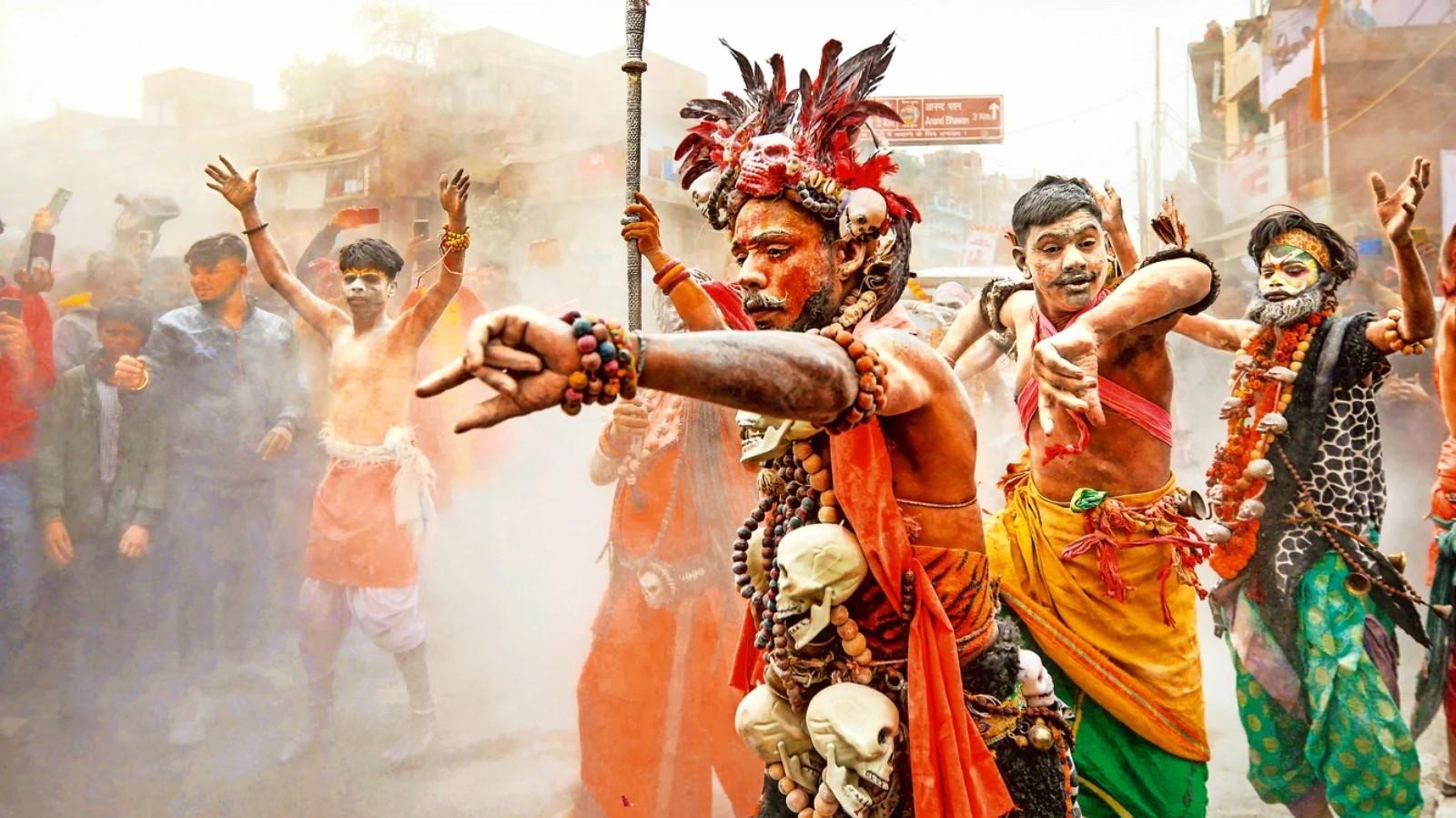Kumbh Mela: Myths, History, and Its Significance
Why in the news?
The Kumbh Mela, one of the largest religious gatherings, has begun in Prayagraj. It holds immense cultural and spiritual significance, with millions of devotees attending for ritual baths, seeking spiritual merit, and uniting religious traditions.
Mythological and Historical Origins:
- The Kumbh Mela traces its origins to a myth in Hindu mythology: when gods and demons churned the ocean to obtain the nectar of immortality, a pitcher (Kumbh) of amrit spilled at four places: Haridwar, Prayagraj, Ujjain, and Nashik.
- This mythological event forms the basis of the periodic celebration, with the Mela held every 12 years at these locations based on celestial alignments.
- The first Kumbh Mela is believed to have originated around the 8th century, popularized by Adi Shankaracharya. The tradition has evolved over centuries, with records of the Mela dating back to ancient times.
The Significance and Practices at Kumbh Mela
- Pilgrims flock to the Mela for a ritual dip in the sacred rivers, while ascetics (sadhus) set up elaborate camps and participate in processions.
- The Mela also serves as a cultural and spiritual gathering, uniting people for discussions, commerce, and the exchange of ideas. Historically, it has been an important venue for spreading nationalist thoughts during the freedom struggle.
The Four Kumbh Mela Locations and Types:
- The Kumbh Mela is celebrated in four cities—Haridwar, Prayagraj, Ujjain, and Nashik—on the banks of sacred rivers: Ganga (Haridwar, Prayagraj), Kshipra (Ujjain), and Godavari (Nashik).
- The festival is held every 12 years in each city; however, Haridwar and Prayagraj also host the Ardh Kumbh (held every six years).
- The Maha Kumbh is the grandest event, occurring once every 12 years at Prayagraj, with millions of devotees gathering to take a holy dip in the sacred rivers, believed to wash away sins and accumulate spiritual merit.
- UNESCO Recognition: Kumbh Mela was recognized as an Intangible Cultural Heritage of Humanity by UNESCO in 2017.
- Significance: This recognition highlights its immense spiritual and cultural value.
- Global Acknowledgment: It celebrates a unique tradition attracting millions of devotees.
Sources Referred:
PIB, The Hindu, Indian Express, Hindustan Times




